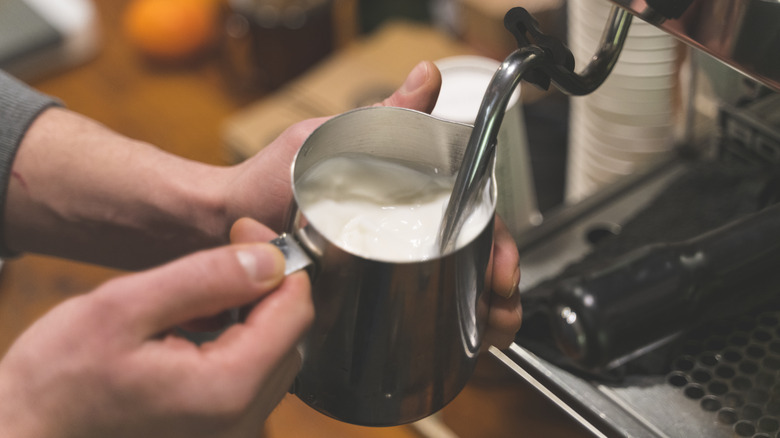The Simple Difference Between Steamed And Frothed Milk
At first glance, frothed milk and steamed milk look very much alike. But each has different characteristics that enhance a coffee beverage in distinct ways. Frothing milk uses aeration to add volume to it, creating a thick foam that keeps its shape and gives an airy mouthfeel. Steaming milk, on the other hand, produces a heavier, silky texture, and it's pourable, ideal for creating those pretty designs on the top of a cappuccino. Ultimately, the simple difference between the two comes down to cold and heat: Frothed milk begins with cold milk – the colder, the better – and remains cold, while steamed milk is always hot, created through exposure to pressurized steam.
The choice of which to use is not always an either-or situation. A cappuccino, for example, is made with equal parts of both steamed milk and frothed milk. The steamed milk provides a velvety smoothness to the drink, while the frothed milk sits on top as a thick cloud of foam.
How to froth and steam at home
The easiest way to froth milk is to use a handheld, battery-operated milk frother, widely available for less than $10. Simply immerse the wire part of the device into cold milk and push the button. The more air you add to the milk, the thicker the foam produced. A blender or even a French press (to pump air into the milk) can also be used to froth milk, and in a pinch, a large, nearly-empty container with a lid – such as a plastic milk jug — will also do the trick. Shake the heck out of the milk and a fair amount of foam will be created. (It's a fun way to use up the last of the milk.)
Steaming milk at home is slightly more complicated, as a bit more equipment is necessary. Some of the home espresso machines have a steam wand, similar to what a coffee shop has, but in lieu of that, handheld steaming wands and various electric milk steamers are sold for less than $50. Pour the desired amount of milk into a metal pitcher designed for that use, and immerse the steaming wand just beneath the surface of the milk; don't go all the way to the bottom for the best results.

